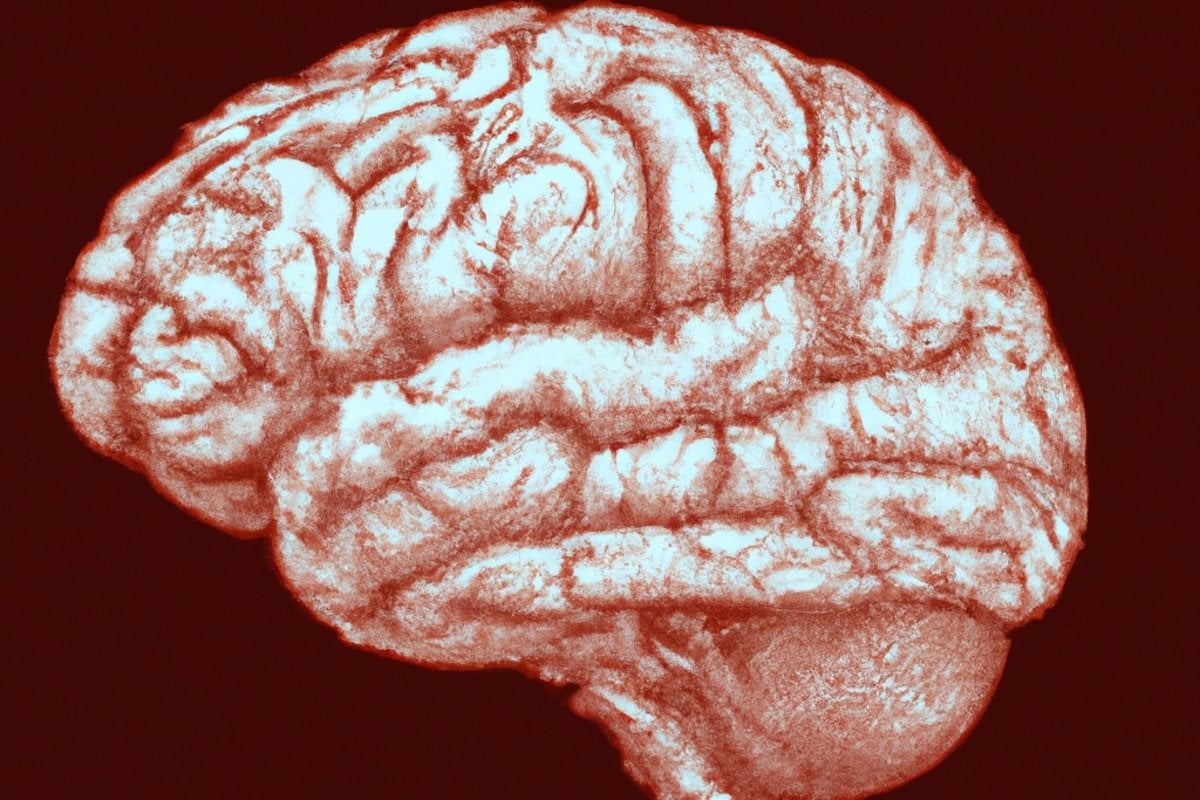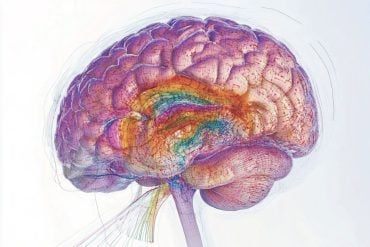Summary: Drugs used to treat glaucoma and high-altitude sickness may prevent cognitive impairment caused by Alzheimer’s disease in mice. The research indicates that carbonic anhydrase inhibitors, already approved by the US Food and Drug Administration (FDA), promote the clearance of amyloid beta from blood vessels and glial cells, which control brain inflammatory processes, as well as reducing inflammation, restoring cell function and preventing cognitive impairment.
Key Points:
- A new study shows that glaucoma drugs prevent cognitive impairment associated with Alzheimer’s disease in mice.
- The drugs promote the clearance of amyloid beta from blood vessels and glial cells, reducing inflammation, restoring cell function, and preventing cognitive impairment.
- Clinical trials to test the effectiveness of these drugs against Alzheimer’s disease in humans could be underway soon as they are already approved by the FDA.
Source: Temple University Health System
Changes in blood vessels in the brain linked to the build-up of a sticky protein known as amyloid beta are a hallmark of early-stage Alzheimer’s disease.
As amyloid accumulates on the walls of vessels, brain cells lose nutrients and oxygen, becoming inflamed and dysfunctional. Over time, this gives rise to cerebral amyloid angiopathy (CAA), a major cause of aging-related cognitive decline.
Reversing the effects of CAA and neuroinflammation could bring significant benefits for individuals at risk of Alzheimer’s disease – and now, new research at the Lewis Katz School of Medicine at Temple University brings that hope within reach.
In experiments carried out in mice, the Temple scientists show that drugs known as carbonic anhydrase inhibitors (CAIs), already FDA-approved for other conditions, such as glaucoma and high-altitude sickness, promote the clearance of amyloid beta from blood vessels and glial cells, which control brain inflammatory processes.
In doing so, CAIs not only reduce inflammation and restore cell function but also prevent cognitive impairment.
The study took place in the lab of Silvia Fossati, PhD, Associate Professor of Neural Sciences and Cardiovascular Sciences at the Lewis Katz School of Medicine at Temple University, and is the first to test the FDA-approved CAIs acetazolamide and methazolamide in animals with cerebrovascular alterations mimicking those of CAA and Alzheimer’s disease in humans.
The results appeared online in the journal Alzheimer’s & Dementia: The Journal of the Alzheimer’s Association.
“Cognitive impairment is closely associated with damage to blood vessels and inflammation in the brain, which are among the main causes, but also consequences, of amyloid accumulation,” explained Dr. Fossati, who is also Associate Director of the Alzheimer’s Center at Temple’s Katz School of Medicine.
“We wanted to see if we could prevent cerebrovascular dysfunction, inflammation and improve cognitive function by therapeutically improving the health of vascular and glial cells, thereby facilitating the removal of amyloid from blood vessels and the brain tissue.”
In previous work, Dr. Fossati and colleagues found that amyloid accumulation causes mitochondria – the energy-generating powerhouses of cells – to function abnormally and that this process is linked to activity of the enzyme carbonic anhydrase.
“We also know from experiments in cells that CAIs suppress mitochondrial dysfunction and cell death induced by amyloid,” Dr. Fossati said. “But whether these same effects occur in vivo has been unknown.”
To test CAIs in vivo, Dr. Fossati and colleagues used a mouse model in which animals, as they age, exhibit increasing levels of human amyloid protein in the brain. As amyloid deposits accumulate in the brain vasculature, the animals begin to show signs of cerebrovascular dysfunction, similar to the way in which humans develop signs of CAA.
The animals were treated with either acetazolamide or methazolamide from about 8 months of age, when signs of amyloid pathology first emerge in these animals, until about 15 or 16 months, when advanced cognitive impairment is present.
When the researchers examined brain tissue from CAI-treated mice, they found significant reductions in amyloid in the cerebral vasculature and in glial cells. They also found that glial cells and blood vessels were overall healthier and had better amyloid-clearing capacity compared to untreated animals.
“Both acetazolamide and methazolamide were highly effective in reducing amyloid deposition and in improving cerebrovascular function,” Dr. Fossati said.

“Our behavioral studies showed that, as Alzheimer’s pathology decreased, CAI-treated mice experienced noticeable gains in cognitive function.”
Additional analyses focused on post-mortem human brain tissue from Alzheimer’s patients. These analyses showed that, similar to animals, levels of a specific carbonic anhydrase enzyme found in mitochondria are abnormally elevated in the brains of Alzheimer’s disease and CAA patients. The evidence is the first to identify carbonic anhydrase as a key factor in humans affected by these conditions.
The group plans next to design and investigate CAIs that are more specific to mitochondria, with the help of Marc Ilies, PhD, Professor in the Department of Pharmaceutical Sciences at the Temple School of Pharmacy.
“The therapies we used for the current study target carbonic anhydrases in the whole cell,” Dr. Fossati explained. “If we can target the enzyme specifically within mitochondria, the efficacy of therapy could improve greatly, and side effects could be reduced.”
Nonetheless, clinical trials to test the effectiveness of acetazolamide and methazolamide against CAA in humans could be underway soon, as both agents are already approved by the FDA.
Other researchers who contributed to the new study include Elisa Canepa, Rebecca Parodi-Rullan, Rafael Vazquez-Torres, Roberto Guzman-Hernandez, Nicole L. Lemon, and Federica Angiulli, Alzheimer’s Center at Temple, Department of Neural Sciences, Lewis Katz School of Medicine; Begona Gamallo-Lana and Adam C. Mar, Department of Neuroscience and Physiology, Neuroscience Institute, NYU Grossman School of Medicine; Ludovic Debure and Thomas Wisniewski, Department of Neurology, Center for Cognitive Neurology, NYU Grossman School of Medicine; Marc A. Ilies, Department of Pharmaceutical Sciences and Moulder Center for Drug Discovery Research, Temple University School of Pharmacy; and Leif Østergaard and Eugenio Gutiérrez-Jiménez, Center of Functionally Integrative Neuroscience (CFIN), Department of Clinical Medicine, Aarhus University, Denmark.
Funding: Funding was provided in part by grants from the National Institutes of Health, the Edward N. and Della L. Thome Memorial Foundation Awards Program in Alzheimer’s Disease Drug Discovery Research, the Alzheimer’s Association, the Pennsylvania Department of Health Collaborative Research on Alzheimer’s Disease (PA Cure), the Karen Toffler Charitable Trust, and the Lemole Center at Temple.
About this neuropharmacology research news
Author: Jeremy Walter
Source: Temple University Health System
Contact: Jeremy Walter – Temple University Health System
Image: The image is credited to Neuroscience News
Original Research: Open access.
“FDA-approved carbonic anhydrase inhibitors reduce amyloid β pathology and improve cognition, by ameliorating cerebrovascular health and glial fitness” by Silvia Fossati et al. Alzheimer’s & Dementia
Abstract
FDA-approved carbonic anhydrase inhibitors reduce amyloid β pathology and improve cognition, by ameliorating cerebrovascular health and glial fitness
Introduction
Cerebrovascular pathology is an early and causal hallmark of Alzheimer’s disease (AD), in need of effective therapies.
Methods
Based on the success of our previous in vitro studies, we tested for the first time in a model of AD and cerebral amyloid angiopathy (CAA), the carbonic anhydrase inhibitors (CAIs) methazolamide and acetazolamide, Food and Drug Administration–approved against glaucoma and high-altitude sickness.
Results
Both CAIs reduced cerebral, vascular, and glial amyloid beta (Aβ) accumulation and caspase activation, diminished gliosis, and ameliorated cognition in TgSwDI mice. The CAIs also improved microvascular fitness and induced protective glial pro-clearance pathways, resulting in the reduction of Aβ deposition. Notably, we unveiled that the mitochondrial carbonic anhydrase-VB (CA-VB) is upregulated in TgSwDI brains, CAA and AD+CAA human subjects, and in endothelial cells upon Aβ treatment. Strikingly, CA-VB silencing specifically reduces Aβ-mediated endothelial apoptosis.
Discussion
This work substantiates the potential application of CAIs in clinical trials for AD and CAA.







